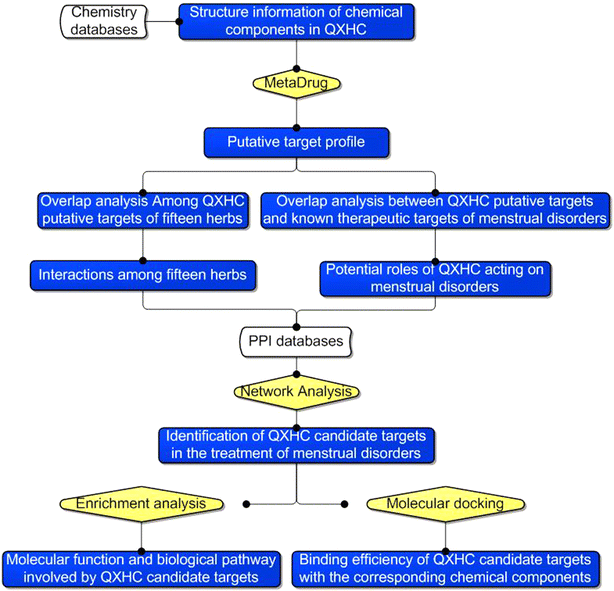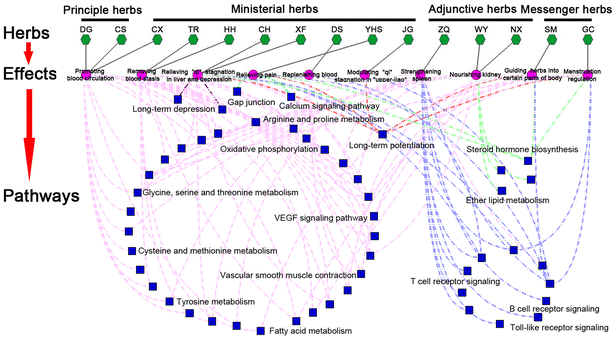A network pharmacology-based strategy deciphers the underlying molecular mechanisms of Qixuehe Capsule in the treatment of menstrual disorders
- PMID: 28835770
- PMCID: PMC5563918
- DOI: 10.1186/s13020-017-0145-x
A network pharmacology-based strategy deciphers the underlying molecular mechanisms of Qixuehe Capsule in the treatment of menstrual disorders
Abstract
Background: QiXueHe Capsule (QXHC) is a Chinese patent drug that is extensively used for the treatment of menstrual disorders. However, its underlying pharmacological mechanisms have not been fully elucidated.
Methods: A list of QXHC putative targets were predicted using MetaDrug. An interaction network using links between QXHC putative targets and the known therapeutic targets of menstrual disorders was constructed. QXHC candidate targets were also identified via calculating the topological feature values of nodes in the network. Additionally, molecular docking simulation was performed to determine the binding efficiency of QXHC compound-putative target pairs.
Results: A total of 1022 putative targets were predicted for 311 chemical components containing in QXHC. Following the calculation of topological features of QXHC putative target-known therapeutic target of menstrual disorder network, 66 QXHC candidate targets for the treatment of menstrual disorders were identified. Functionally, QXHC candidate targets were significantly associated with several biological pathways, such as VEGF and Chemokine signaling pathways, Alanine/aspartate/glutamate metabolism, Long-term depression and T/B cell receptor signaling pathway. Moreover, molecular docking simulation demonstrated that there were 20 pairs of QXHC chemical component-candidate target had the strong binding free energy.
Conclusions: This novel and scientific network pharmacology-based study holistically deciphers that the pharmacological mechanisms of QXHC in the treatment of menstrual disorders may be associated with its involvement into hemopoiesis, analgesia, nutrients absorption and metabolism, mood regulation, as well as immune modulation.
Keywords: Chinese herbal formula; Menstrual disorders; Molecular docking simulation; Network pharmacology; Traditional Chinese Medicine.
Figures



References
-
- Woodman J, Pitkin J. Menstrual disturbances. J Obstet Gynecol Rep Med. 2010;20(11):329–334. doi: 10.1016/j.ogrm.2010.08.001. - DOI
LinkOut - more resources
Full Text Sources
Other Literature Sources

